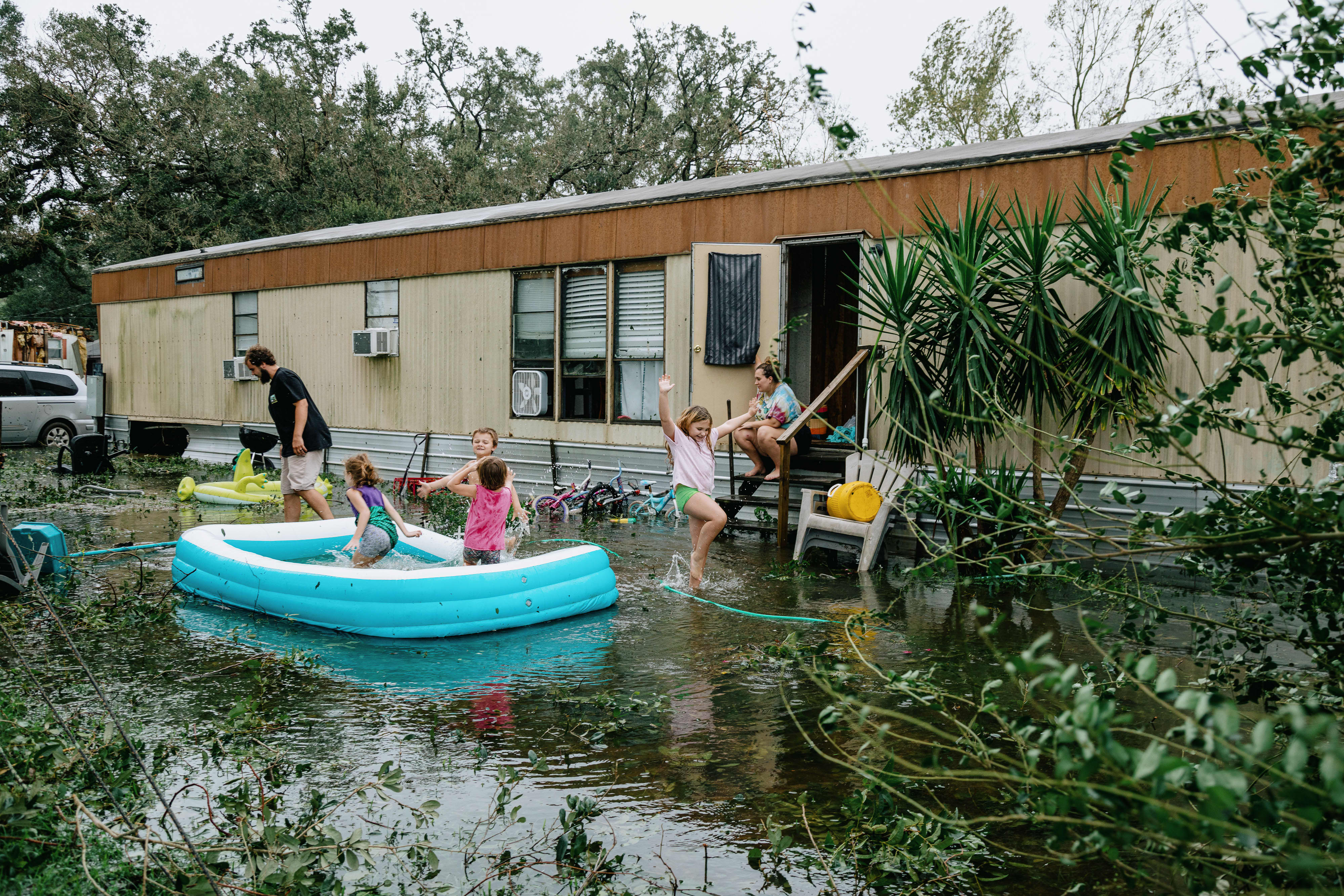Hurricane Sally moves northeast as Florida, Alabama neighborhoods reckon with destruction

Clinton and Randal Ream with their son Saylor and daughter Nayvie and two neighbors Aubrey Miller and Harmony Morgan at their home in a small trailer park in West Pensacola. The area received a lot of damage after Hurricane Sally came through as a category 2 hurricane in Pensacola, La. on September 16th, 2020.
Bryan Tarnowski | The Washington Post via Getty Images
Hurricane Sally moved northeast on Thursday after causing massive flooding and destruction on the U.S. Gulf Coast. The storm made landfall in Alabama yesterday as a slow-moving Category 2 hurricane before tearing through the Florida Panhandle, where it pummeled the city of Pensacola with more than two feet of rain.
The National Weather Service warned that river flooding will be a serious concern through the weekend. Even though Sally was downgraded to a tropical depression on Wednesday, the storm is still unleashing heavy rain and strong winds as it moves northeast and forecasters expect it will bring more than a foot of rain to some areas.
When Sally first made landfall over the Gulf Shores on Wednesday, it was moving less than 5 miles an hour, an incredibly slow pace which creates more destruction and has connections to climate change.
Sally’s slow movement and stalling left entire neighborhoods severely damaged from strong storm surge and record rainfall that in some areas caused more than five foot floods. Relentless rain flooded roads, homes and cars, and a five foot storm surge sent adrift a construction barge in Florida.
A section of a major bridge going through the Pensacola Bay broke off during the storm, and a ship was torn away from a dock in the Pensacola water.
The speed of tropical storms making landfall has slowed during the last several decades and some research suggests that global warming, specifically in the Arctic, has slowed hurricane pace by slowing down the jet stream.
More than 300 people were rescued from floods in Escambia County and at least one person died in Orange Beach, Alabama, according to the mayor.
Hundreds of thousands of people in Alabama and Florida were also left without power from Sally, which caused weather officials to urge residents to use their generators with caution. When Hurricane Laura hit Louisiana and Texas in August, several people died from carbon monoxide poisoning from their generators.
Climate change has caused more frequent and destructive hurricanes and wildfires, which are currently burning through the U.S. West. Dry conditions fueled by climate change made this year’s blazes the worst in history.
Sally was the eighth tropical storm or hurricane to hit the United States this year, and there are currently two more storms developing in the Atlantic.
This year is set to be one of the worst U.S. hurricane seasons on record in part because of rising ocean temperatures. The National Hurricane Center is running out of letters of the alphabet for upcoming storms.
A man walks his bicycle through a street flooded by Hurricane Sally in Pensacola, Florida, on September 16, 2020. – Hurricane Sally barrelled into the US Gulf Coast early Wednesday, with forecasts of drenching rains that could provoke “historic” and potentially deadly flash floods.
CHANDAN KHANNA | AFP via Getty Images




